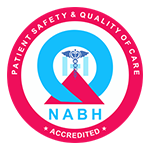Let’s be real; just hearing the word “biopsy” can make your stomach do a little flip. It sounds serious, maybe even scary. But the truth is, a kidney biopsy is a pretty common, safe, and incredibly useful test that helps doctors understand what’s going on with your kidneys.
So, if your doctor mentioned it, or if you’re just curious and trying to understand it better (good for you!), take a deep breath. We’re going to break it all down in the simplest way possible; no medical jargon, just real talk.
A kidney biopsy (also called a renal biopsy) is a test where a teeny-tiny bit of kidney tissue is taken out and looked at under a microscope. The goal is to get a clear picture of what’s happening inside your kidneys, whether it’s damage, disease, or how a treatment is working.
Think of it this way: if your kidneys are acting up, maybe your creatinine levels are high, or there’s blood or protein in your urine, or your doctor just notices something “off”, they may want to zoom in and get a clearer look. But since they obviously can’t peek inside your body with their eyes, a biopsy gives them that inner view.
A well-formed question! Your doctor needs to perform this test for multiple reasons. The following are the most frequent reasons:
If you’ve had a kidney transplant, A biopsy serves to determine the health of your new kidney and detect possible rejection.
Good news: most kidney biopsies are quick and don’t require major surgery. It’s usually done as an outpatient procedure, which means you go home the same day.
You stay awake, but most people say it feels more like pressure or a weird tug than sharp pain. Definitely not as scary as it sounds.
Afterward, you’ll need to rest for a few hours while your body settles down and your care team keeps an eye on things like blood pressure and urine. Some people feel a bit sore near the biopsy site, but that usually goes away in a day or two.
Like with any medical procedure, there are some risks, but they’re usually small.
The important thing to remember is that doctors do this all the time. They’re super careful, and complications are pretty rare.
After the biopsy, the kidney sample goes to a lab where a specialist (called a pathologist) examines it closely.
The results help your doctor figure out what’s wrong (if anything), how serious it is, and the best way to treat it. Usually, it takes a few days to a week to get the full results. Once they’re in, your doctor will walk you through them and answer any questions.
Recovery from a kidney biopsy usually takes about a day. Most people rest for 24 hours, avoid heavy lifting, and are normal within one or two days.
Having one scheduled will prompt your doctor to provide clear instructions. These might include:
If you’re someone who loves a natural approach to health, you might be wondering: Can kidney disease treatment in Ayurveda support kidney health?
The answer is, yes, it can! While Ayurveda doesn’t replace modern diagnostics like a biopsy, Ayurvedic herbs like Punarnava, Gokshura, and Varun have long been used to support healthy kidneys, reduce inflammation, and promote better urinary health. You can consider them as a gentle support system, especially after the biopsy, while your body is healing.
But always check with your doctor before starting any new herbs, especially if you’re already taking other medications.
We get it, “biopsy” sounds intimidating. But once you understand what it is, why it’s done, and how it works, it becomes a lot less scary.
A kidney biopsy can be the key to finding the right treatment and improving your health. It’s like finally getting the full picture instead of guessing from just a few puzzle pieces.
So, if your doctor recommends one, don’t panic. Ask questions, take someone with you for support, and know that you’re taking an empowered step toward understanding your body and feeling better.
Your kidneys do so much for you, quietly, consistently, and often unnoticed. Learning more about them is one of the best ways to return the favor.
Ans.
A kidney biopsy involves taking a small tissue sample to diagnose kidney disease, evaluate unexplained kidney issues, or guide treatment decisions.
Ans.
It’s done using a thin needle inserted through the skin into the kidney, guided by ultrasound or CT imaging, under local anesthesia.
Ans.
The main risks include bleeding, pain, infection, or, rarely, damage to the kidney or nearby organs.
Ans.
Patients may need to stop blood thinners, fast for a few hours, and undergo blood and urine tests beforehand.
Ans.
It reveals the type, severity, and stage of kidney disease, helping tailor the most appropriate treatment approach.
Ans.
Typically 24–48 hours with bed rest on the first day; full recovery within a few days if no complications occur.

Certificate no- AH-2023-0186
JAN 05,2023-JAN 04,2026
"Ayurveda is not just a system of medicine; it's a way of life. Connect with us to embrace a lifestyle that nurtures your body, mind, and soul."
Book Consultation Now